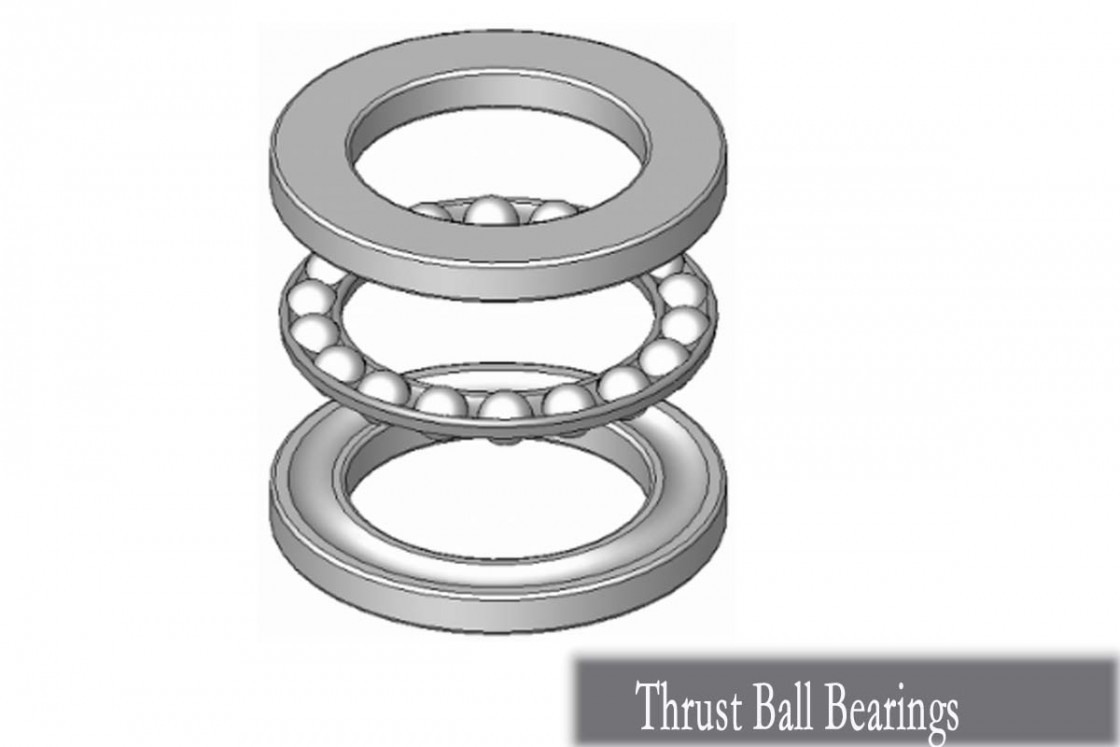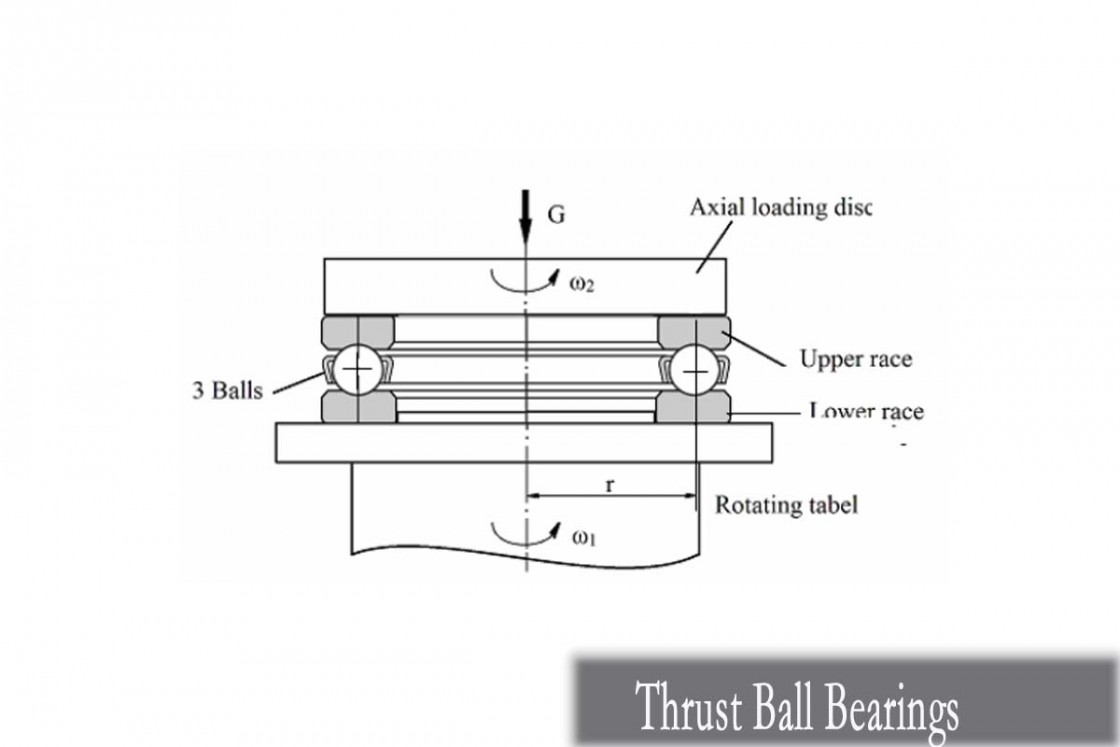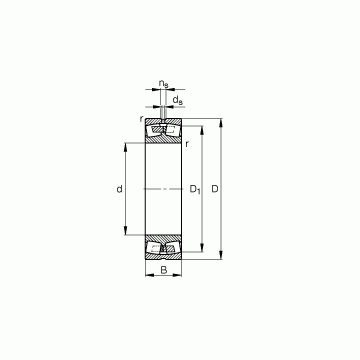Home> Company News> Navigating Directional Forces: Understanding Thrust Ball Bearings
- AddressNo.7001. XUEYUAN ROAD, NANSHAN DISTRICT,SHENZHEN,CHINA
- Factory AddressNo.7001. XUEYUAN ROAD, NANSHAN DISTRICT,SHENZHEN,CHINA
- Worktime9:00-18:00
- Phone(Working Time)0531-85064681
- Phone(Nonworking Time)0531-85064680
- Fax0531-85064680
Introduction
In the realm of machinery and mechanical systems, the management of directional forces is paramount to ensure optimal performance and longevity. Among the various types of bearings designed to handle these forces, Thrust Ball Bearings (TBBs) play a pivotal role. Delve into the intricacies of the TBB, elucidating its design, functionality, and application in effectively managing axial loads.
Thrust Ball Bearings are a specialized type of bearing engineered to accommodate predominantly axial loads, as opposed to radial loads handled by other types of bearings. These bearings are crucial in applications where the primary force acts in a specific direction, such as in automotive transmissions, machine tool spindles, and aerospace systems.
The significance of understanding TBBs lies in their ability to facilitate smooth and efficient operation in machinery subjected to directional forces. By grasping the fundamentals of TBB design and functionality, engineers and technicians can make informed decisions regarding bearing selection, installation, and maintenance to optimize performance and reliability.
we will explore the key characteristics of Thrust Ball Bearings, delve into their structural components, and examine their diverse applications across various industries. Additionally, we will discuss best practices for installing and maintaining TBBs to ensure prolonged service life and minimal downtime.

Understanding Thrust Ball Bearings
Thrust Ball Bearings (TBBs) stand as a cornerstone in the domain of bearings, specifically designed to tackle directional forces with finesse and precision. To comprehend their significance fully, let's delve into the intricate details of their structure, functionality, and unique features.
At the heart of Thrust Ball Bearings lies a sophisticated design engineered to withstand axial loads, making them indispensable in applications where directional forces are prevalent. Let's dissect their anatomy to understand how they effectively manage these forces.
Structure and Components:
|
Raceways |
TBBs feature grooved raceways on which the balls roll, facilitating smooth movement and load distribution. These raceways are meticulously designed to endure the stresses imposed by axial loads. |
|
Balls |
The balls within TBBs serve as the primary loadcarrying elements, transmitting the applied force from one raceway to the other. These balls are precisionengineered to minimize friction and ensure efficient load transfer. |
|
Cages |
Surrounding the balls, cages maintain uniform spacing and alignment, preventing contact between adjacent balls. This crucial component enhances bearing durability and performance under demanding conditions. |
Comparison with Other Thrust Bearings:
TBBs distinguish themselves from other types of thrust bearings through their unique design tailored to accommodate axial loads in both directions. Unlike thrust roller bearings, which primarily handle radial forces, TBBs excel in applications where bidirectional axial loads are predominant. This versatility makes them indispensable in various industries, including automotive, aerospace, and manufacturing.
Key Terminology and Concepts:
To navigate the realm of TBBs effectively, it's essential to grasp key terminology and concepts associated with these bearings. Terms such as thrust capacity, bearing clearance, and axial rigidity play pivotal roles in understanding TBB performance and application suitability. Thrust capacity denotes the maximum axial load a TBB can withstand, while bearing clearance influences bearing preload and operational characteristics. Additionally, axial rigidity measures a bearing's ability to maintain alignment and resist deformation under axial loads.
By comprehending the intricacies of TBB structure, comparing them with alternative thrust bearings, and familiarizing ourselves with essential terminology, we lay the foundation for a comprehensive understanding of these critical components in machinery and mechanical systems.

Types and Configurations of Thrust Ball Bearings
Understanding the diverse landscape of Thrust Ball Bearings (TBBs) requires a comprehensive exploration of their types and configurations. we delve into the intricacies of TBBs, ranging from their directional capabilities to variations in cage design and specialized configurations for specific applications.
SingleDirectional vs. DoubleDirectional Designs:
TBBs come in two primary configurations: singledirectional and doubledirectional. Singledirectional TBBs are engineered to handle axial loads in one direction only, making them suitable for applications where unidirectional forces predominate. Conversely, doubledirectional TBBs boast the ability to withstand axial loads in both directions, offering enhanced versatility and adaptability in systems where bidirectional forces are prevalent.
Variations in Cage Design and Material Options:
Cages play a critical role in TBB performance by maintaining ball spacing and alignment, thereby minimizing friction and enhancing bearing longevity. These cages are available in various designs and materials, each with unique properties and benefits. Traditional cage materials like brass and steel offer excellent durability and resistance to wear, making them ideal for demanding applications. However, advancements in materials science have introduced synthetic polymers as viable alternatives, offering reduced weight, improved corrosion resistance, and enhanced lubrication properties.
Specialized TBB Designs for Specific Applications:
In addition to standard configurations, specialized TBB designs cater to specific application requirements, such as highspeed or hightemperature environments. Highspeed TBBs feature precision engineering and enhanced balltoraceway contact, minimizing centrifugal forces and enabling reliable operation at elevated speeds. On the other hand, hightemperature TBBs incorporate heatresistant materials and advanced lubrication systems, ensuring consistent performance in extreme thermal conditions.
By understanding the nuances of TBB types and configurations, engineers and designers can make informed decisions when selecting bearings for diverse applications. Whether it's optimizing performance in highspeed machinery or ensuring reliability in harsh environments, the versatility and adaptability of Thrust Ball Bearings remain unparalleled in navigating directional forces effectively.
|
Brand |
Configuration |
Cage Material |
Special Features |
|
SKF |
SingleDirectional |
Steel |
High load capacity, excellent durability |
|
|
|
|
and resistance to wear |
|
|
DoubleDirectional |
Brass |
Precision engineering, smooth operation, |
|
|
|
|
and bidirectional load handling |
|
FAG |
SingleDirectional |
Synthetic |
Lightweight, corrosionresistant, and |
|
|
|
Polymer |
selflubricating properties |
|
|
DoubleDirectional |
Steel |
High stiffness, suitable for highspeed |
|
|
|
|
applications |
|
NSK |
SingleDirectional |
Brass |
Superior heat dissipation, reduced |
|
|
|
|
friction, and extended lifespan |
|
|
DoubleDirectional |
Steel |
Enhanced axial load capacity, suitable |
|
|
|
|
for heavyduty applications |
Thrust Ball Bearings (TBBs) are available from various reputable brands, each offering distinct configurations and features to cater to diverse industrial needs. Below is a comparison table highlighting the differences among TBBs from prominent brands such as SKF, FAG, and NSK:
·
SKF: SKF TBBs are renowned for their high load capacity and excellent durability, making them suitable for applications requiring robust performance. Singledirectional TBBs from SKF typically feature steel cages, while doubledirectional variants often utilize brass cages for precision engineering and bidirectional load handling.
·
·
FAG: FAG offers a range of TBBs with unique features such as lightweight synthetic polymer cages for singledirectional bearings, providing corrosion resistance and selflubricating properties. Doubledirectional TBBs from FAG are often constructed with steel cages, offering high stiffness and suitability for highspeed applications.
·
·
NSK: NSK TBBs are known for their superior heat dissipation and reduced friction, resulting in extended lifespan and enhanced performance. Brass cages are commonly used in NSK's singledirectional TBBs for efficient heat dissipation, while steel cages are preferred in doubledirectional variants for enhanced axial load capacity in heavyduty applications.
·
By understanding the differences in brand offerings and configurations, manufacturers and engineers can make informed decisions when selecting TBBs for their specific requirements.
Operating Principles and Performance Characteristics
Thrust Ball Bearings (TBBs) play a critical role in managing directional forces within machinery and mechanical systems. Understanding their operating principles and performance characteristics is essential for engineers and manufacturers to ensure optimal equipment functionality.
Operating Principles of Thrust Ball Bearings
Thrust Ball Bearings are designed to handle axial loads by utilizing ball bearings arranged in a raceway with the ability to accommodate thrust in a specific direction. The design enables TBBs to distribute axial loads evenly across the bearing surfaces, minimizing friction and wear. By doing so, TBBs ensure smooth operation and prolonged lifespan of mechanical systems, making them indispensable components in various industrial applications.
Performance Characteristics of Thrust Ball Bearings
Several factors influence the performance of TBBs, including speed, load capacity, and operating temperature. Higher speeds may require TBBs with precision engineering and lubrication systems to maintain smooth operation and prevent overheating. Load capacity determines the maximum axial load that a TBB can withstand without compromising performance or causing damage to the bearing components. Additionally, operating temperature plays a crucial role, as extreme temperatures can affect the material properties and lubrication efficiency of TBBs, leading to premature failure if not adequately addressed.
RealWorld Applications and Performance Benefits
TBBs find extensive use across various industries, including automotive, aerospace, and manufacturing, where they are employed in applications such as gearboxes, turbines, and machine tools. Case studies highlighting the performance benefits of TBBs in these industries demonstrate their ability to improve equipment reliability, reduce maintenance costs, and enhance overall operational efficiency. By leveraging the unique characteristics of TBBs, companies can achieve optimal performance and longevity in their machinery and mechanical systems.
Conclusion
In conclusion, understanding the operating principles and performance characteristics of Thrust Ball Bearings is crucial for engineers and manufacturers navigating directional forces within machinery. By optimizing TBB selection and application, businesses can effectively manage axial loads, improve equipment reliability, and achieve enhanced performance across diverse industrial sectors. Thrust Ball Bearings continue to be indispensable components in the realm of mechanical engineering, contributing to innovation and advancement in technology.

Installation and Maintenance Best Practices
Thrust Ball Bearings (TBBs) are crucial components in machinery, designed to withstand axial loads and navigate directional forces efficiently. Understanding the best practices for their installation and maintenance is essential for ensuring optimal performance and longevity. we will delve into the guidelines and recommendations for installing and maintaining TBBs, emphasizing the importance of proper procedures and regular upkeep.
Guidelines for Proper TBB Installation
Proper installation of TBBs begins with careful consideration of shaft and housing requirements. It is essential to ensure that the shaft and housing are clean, smooth, and free from any burrs or defects that could compromise the integrity of the bearing surfaces. Additionally, preload adjustment is critical for TBBs to operate effectively, as it influences the internal clearance and load distribution within the bearing assembly. Proper alignment techniques should also be employed to minimize misalignment and uneven loading, which can lead to premature wear and failure.
Recommendations for Regular Maintenance
Implementing regular maintenance schedules is crucial for monitoring the condition of TBBs and detecting early signs of wear or damage. This includes routine inspections to check for abnormal noise, vibration, or temperature fluctuations, which may indicate potential issues with the bearing assembly. Periodic lubrication is also essential to optimize TBB performance and prevent premature wear. By adhering to a proactive maintenance approach, potential problems can be identified and addressed before they escalate, minimizing downtime and costly repairs.
Importance of Lubrication
Selecting appropriate lubricants and lubrication methods is paramount for maximizing TBB performance and lifespan. The lubricant acts as a protective barrier between the bearing components, reducing friction and wear while facilitating smooth operation. It is essential to choose lubricants that are compatible with the operating conditions and temperature ranges of the application. Proper lubrication methods, such as oil bath, grease packing, or centralized lubrication systems, should be employed to ensure adequate lubricant distribution throughout the bearing assembly.
Conclusion
In conclusion, proper installation and maintenance practices are crucial for maximizing the performance and lifespan of Thrust Ball Bearings (TBBs). By following guidelines for installation procedures, implementing regular maintenance schedules, and selecting appropriate lubricants, businesses can ensure optimal TBB performance and minimize the risk of premature failure. Investing in proper installation and maintenance practices is essential for navigating directional forces effectively and achieving reliable operation in machinery and mechanical systems.
Advancements and Innovations in Thrust Ball Bearings
Thrust Ball Bearings (TBBs) play a crucial role in managing directional forces within machinery and mechanical systems. we'll explore the advancements and innovations in TBB technology, highlighting recent developments and emerging trends that are shaping the future of these essential components.
|
Recent Advancements in TBB Technology |
Recent years have witnessed significant advancements in TBB technology, driven by the quest for improved performance and reliability. Manufacturers have focused on enhancing materials, coatings, and manufacturing processes to meet the evolving demands of various industries. Advanced materials, such as ceramics and composites, offer superior strength, durability, and resistance to corrosion, extending the lifespan of TBBs in demanding operating conditions. Furthermore, innovative coatings and surface treatments provide enhanced lubrication and protection against wear, reducing friction and improving overall efficiency. |
|
Emerging Trends in TBB Technology |
One of the emerging trends in TBB technology is the integration of sensors and smart monitoring systems for realtime performance tracking. These advanced monitoring solutions enable operators to gather valuable data on TBB operation, including temperature, vibration, and load distribution. By leveraging this data, maintenance schedules can be optimized, and potential issues can be identified before they escalate into costly failures. Additionally, predictive analytics and machine learning algorithms are being employed to predict TBB lifespan and optimize operational parameters for improved efficiency and reliability. |
|
Future Developments and Implications |
Looking ahead, the future of TBB technology holds exciting possibilities. Continued research and development efforts are expected to lead to further improvements in efficiency, reliability, and durability. Potential developments may include advancements in nanotechnology for precision engineering and the integration of additive manufacturing techniques for customized TBB designs. These advancements have farreaching implications for various industries, offering enhanced performance, reduced maintenance requirements, and increased operational uptime. |
Conclusion
In conclusion, advancements and innovations in Thrust Ball Bearings (TBBs) are driving significant improvements in efficiency, reliability, and durability. With ongoing developments in materials, coatings, and manufacturing processes, TBBs are poised to meet the evolving demands of modern machinery and mechanical systems. By embracing emerging trends such as sensor integration and predictive maintenance, businesses can maximize the performance and lifespan of TBBs, ensuring smooth operation and minimal downtime. As we continue to push the boundaries of TBB technology, the future holds promising opportunities for enhancing efficiency and reliability across a wide range of applications.
Conclusion
In conclusion, our exploration into Thrust Ball Bearings (TBBs) has shed light on their pivotal role in managing directional forces within machinery and mechanical systems. Throughout this discussion, we have gained valuable insights into the design, functionality, and applications of TBBs, underscoring their significance in various industries.
TBBs serve as essential components for accommodating axial loads and maintaining stability in systems subjected to directional forces. Their ability to distribute these forces evenly across bearing surfaces minimizes friction and wear, contributing to the smooth operation and longevity of machinery.
As we conclude our examination of TBBs, it is crucial to emphasize their critical role in ensuring the efficient and reliable performance of equipment in diverse applications. Whether in automotive, aerospace, or manufacturing, TBBs play a fundamental role in maintaining operational integrity and preventing costly downtime.
Looking ahead, it is imperative for industry professionals to remain abreast of advancements in TBB technology and leverage them to enhance equipment performance and reliability. By staying informed and embracing innovation, organizations can optimize the functionality of TBBs and drive operational excellence.
In essence, the understanding of Thrust Ball Bearings (TBBs) is paramount for navigating directional forces and optimizing the performance of machinery and mechanical systems. Let us continue to prioritize the adoption of TBBs and harness the benefits of cuttingedge technology to propel industries forward.
FAQs: Common Questions About Thrust Ball Bearings
Here are some frequently asked questions about Thrust Ball Bearings (TBBs):
What are Thrust Ball Bearings?
Thrust Ball Bearings are a type of rolling element bearing designed to accommodate axial loads in one or both directions. They consist of two washers (raceways) and a set of balls held in a cage assembly.
How do Thrust Ball Bearings work?
TBBs work by transferring axial loads from one component to another along the axis of rotation. The balls inside the bearing move along the raceways, distributing the load evenly and reducing friction.
3. What are the main components of Thrust Ball Bearings?
The main components of TBBs include the two washers (raceways), the balls, and the cage assembly. The washers provide the surfaces on which the balls roll, while the cage keeps the balls evenly spaced apart.
What are the different types of Thrust Ball Bearings?
TBBs can be classified into singledirectional and doubledirectional designs. Singledirectional TBBs can accommodate axial loads in one direction, while doubledirectional TBBs can handle axial loads in both directions.
What factors should be considered when selecting Thrust Ball Bearings?
When selecting TBBs, factors such as load capacity, speed, operating temperature, and environmental conditions should be taken into account. It is essential to choose the appropriate type and size of TBBs for the specific application.
How are Thrust Ball Bearings installed and maintained?
Proper installation and maintenance are crucial for maximizing the performance and lifespan of TBBs. This includes ensuring correct shaft and housing fits, preload adjustment, alignment, and regular lubrication and inspection.
What are the applications of Thrust Ball Bearings?
TBBs are commonly used in applications where axial loads need to be supported, such as automotive transmissions, machine tools, industrial pumps, and marine equipment.
How do Thrust Ball Bearings compare to other types of bearings?
TBBs offer advantages such as high loadcarrying capacity, relatively low friction, and the ability to accommodate axial loads. However, they may have limitations in terms of radial load capacity compared to other types of bearings such as deep groove ball bearings or cylindrical roller bearings.
What are some common issues or failures associated with Thrust Ball Bearings?
Common issues with TBBs include excessive noise, vibration, or heat generation, which may indicate misalignment, inadequate lubrication, or bearing damage. Regular maintenance and inspection can help prevent these issues.
How can I prolong the lifespan of Thrust Ball Bearings?
Prolonging the lifespan of TBBs requires proper installation, maintenance, and lubrication practices. It is also essential to avoid overloading or misapplication of the bearings and to address any issues promptly to prevent further damage.


 232/500 KCW33+H32/500 SKF Spherical Roller Bearings
232/500 KCW33+H32/500 SKF Spherical Roller Bearings 23128-E1A-M FAG Spherical Roller Bearings
23128-E1A-M FAG Spherical Roller Bearings